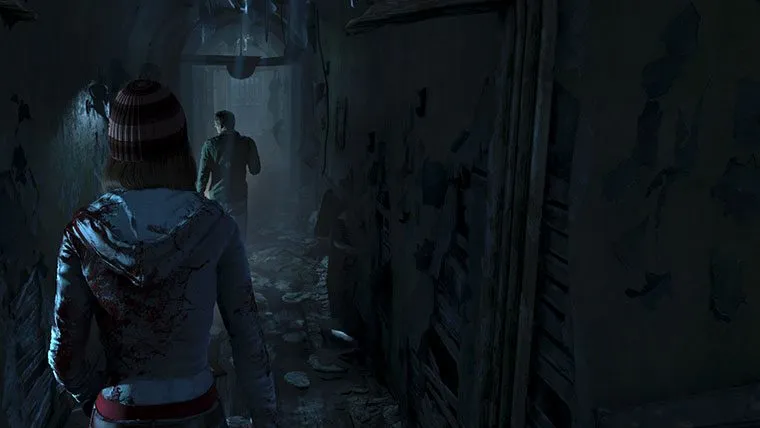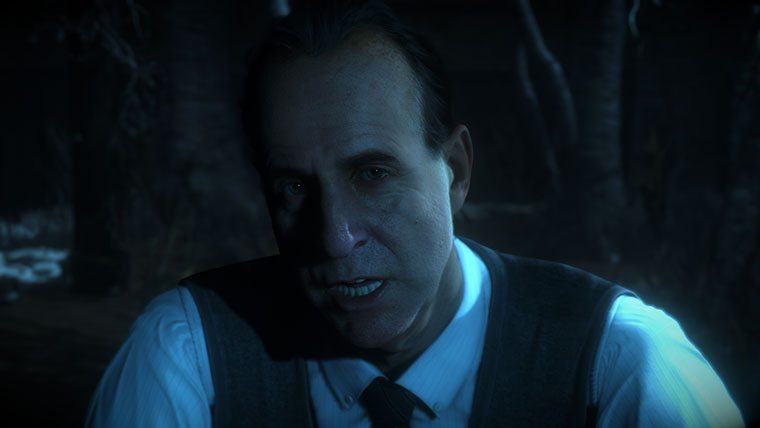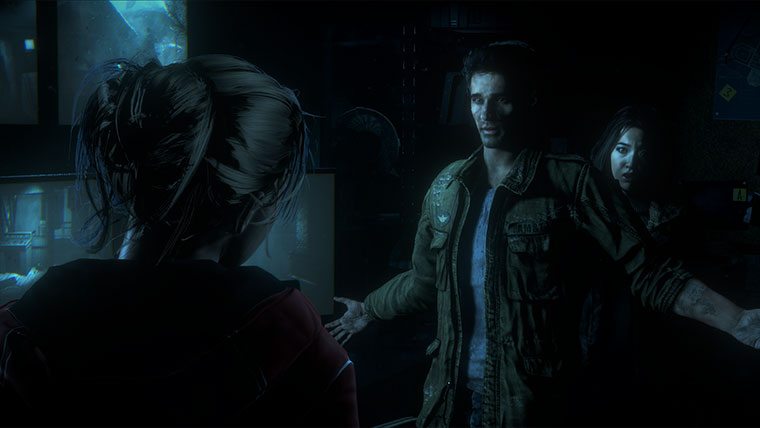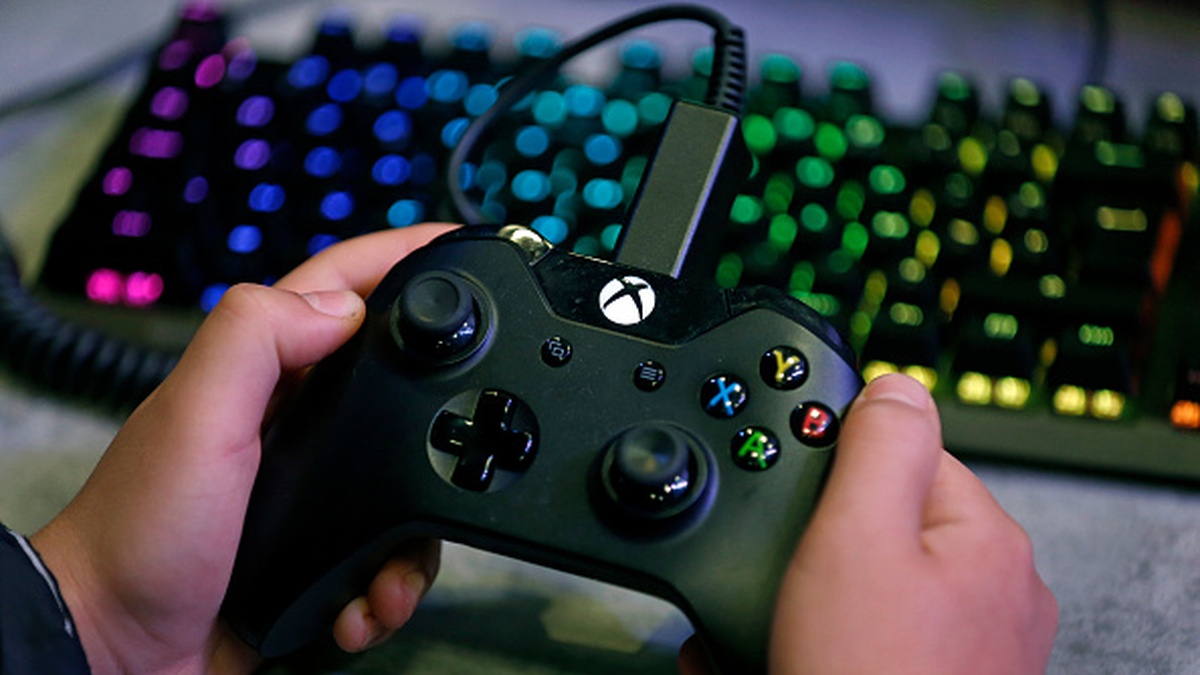Until Dawn might be the most ambitious game to arrive on the new generation of consoles from Sony and Microsoft. Supermassive Games has strayed far away from convention with this narrative driven experience. PlayStation fans won’t be a strangers to this type of game. If you’ve dipped your toes into the pool of Quantic Dream titles on the PlayStation 3, you’ll be somewhat familiar with what the developers are trying to do here. Perhaps less linear, but like Heavy Rain and Beyond: Two Souls, Until Dawn is a game that centers around player choice and simplistic prompts in telling a story that can end in any number of ways.
The premise is also quite different. Until Dawn isn’t quite survival horror, though at first glance it could remind you of older Resident Evil games with its third person perspective and plodding pace. It’s part point and click adventure and part action, leaning heavily on the point and click side of the spectrum, using things like quick time events on the Dualshock. It’s a game about making decisions wrought with tension, where characters can be developed and shaped, destinies determined by simple, small decisions that the player makes. These decisions are centered around a thing called the butterfly effect, no not the movies. Which scientifically is a dependence on conditions where small changes can result in large differences. Simply put, choices that players make will result in different outcomes in Until Dawn, these changes are your choices, and these choices are many.

Supermassive smacks you in the face right away with these important choices to set off the game. You quickly see that you can shape and mold the characters of Until Dawn in a seemingly endless number of ways. From the personalities and relationships that they have, to their fates. Presented like a horror movie, which centers around a group of teenagers partying at a deserted Ski Lodge, Until Dawn most certainly hits many slasher film tropes, at least in its opening hours. It can come off as campy, some of the dialogue can be a little jarring, even cheesy at times. It is, however, delivered by Hollywood talent in the likes of Hayden Panettiere, Brett Dalton and Rami Malek among others. In a game where dialogue is a key gameplay component, it’s at least nice to see that this aspect of the game delivers believable performances that helps you relate to the characters. The setting, characters, and music tie together nicely to present a tension-filled experience, something absolutely necessary for this game to grab you.
Small changes in player actions or choice can produce different results in the outcome of Until Dawn
And that’s Until Dawn’s key hook, it’s not a game that is going to require extreme dexterity. Quick time events, and character choices are the main tasks that the player must accomplish, and they’re tense because of the possible outcomes. Any of the kids can die in Until Dawn, it’s all about the choices that the player makes. And while many games have offered branching story paths based on choice, many times that’s just smoke and mirrors that will get you to same end result. Until Dawn doesn’t reveal itself as that but there are most certainly plot points that will be hit in any playthrough. The choices you make feel like they have real consequence in regards to how this story will end and be told along the way.
Do you run or hide from the this flamethrower-wielding psycho chasing you through the woods? Can you hold the controller perfectly still while being hunted? Can you execute button presses to make climbs or dashes to safety? Will you be the nice guy, or the asshole? These are all things that you’ll find in Until Dawn, among many, many other choices and sequences just like them. While the majority of the game takes place in the third person perspective, the game cuts away into decision making moments, conversation points that will shape your relationships, and action sequences that have you tackling quick time button prompts, rudimentary shooting segments, and other similar moments. Because of this, Until Dawn might not be for everyone. There were plenty of times where I just wanted to set the controller down as I was much more engaged in the story being told than the actual feedback I was getting from giving my input. Worse yet, the majority of the content that requires you to be hands-on is just walking around, and that walking is a little bit tedious with controls that can be unresponsive.

While it may have been slated to arrive on the PlayStation 3, Until Dawn looks the part of a PlayStation 4 title. Exceptional graphics when it comes to character emotions, Until Dawn’s characters visual performances are equally as impressive as their audio ones. Environments are creepy and dark, as they should be. Until Dawn has flashes of exceptional visuals, and it also has moments where it doesn’t look that great at all. Some robotic animations in movement don’t quite match the level of detail found in the faces of the characters. It can be a little jarring, but all in all, Until Dawn is a pretty good looking game. What might have been a carry over from the PlayStation 3 and PlayStation Move era is the constant use of flashlights, torches, or lanterns when navigating areas, but none of these areas really feel like they need it. Something like hiding collectibles in areas where only the flashlight could see might have made this mechanic a little more meaningful.
Until Dawn has a story that will keep you guessing until the very end
Until Dawn made me think about the popularity of “walking simulators” recently. These narrative driven experiences really hinge on how well the story and world is delivered to the player. While Until Dawn isn’t quite that in the third person, a lot of the game’s story is told through exploring with the character you happen to be controlling, finding collectibles, or other items that add color to the world. Each chapter is broken into segments where you’ll often control a pair of characters, are given choices in their dialogue, and choices in their actions. These choices alter the path that the game takes, and this path has a lot of twists and turns when it comes to the overall plot, some of said plot points remain hidden for almost the entire game. Repurcussions or benefits of these choices and actions can minor or major. It would be wholly unfair to go into spoiler territory here as Until Dawn most certainly has a story that will keep you guessing until the very end, I suppose that engagement makes it somewhat interesting.

One of the most thoughtful features implemented in Until Dawn is the ability to replay these episodes after you finish the game. If you want to know what could have happened, it’s as easy as going back to a specific episode and making a different choice. There are, however, many choices to be made along the way that could alter the story in other ways as you’ll need to playthrough everything beyond the point where you’ve gone back to. It’s fun to change the fates of specific characters that you may have been wanting to keep alive. Simple missteps can have deadly results, and there’s no going back until you’ve finished the game.
The Verdict
Perhaps more proficient in keeping the player tense than in delivering legitimate scares, Supermassive Games’ Until Dawn is an interesting blend of survival horror and choose your own adventure.











Published: Aug 24, 2015 10:00 am